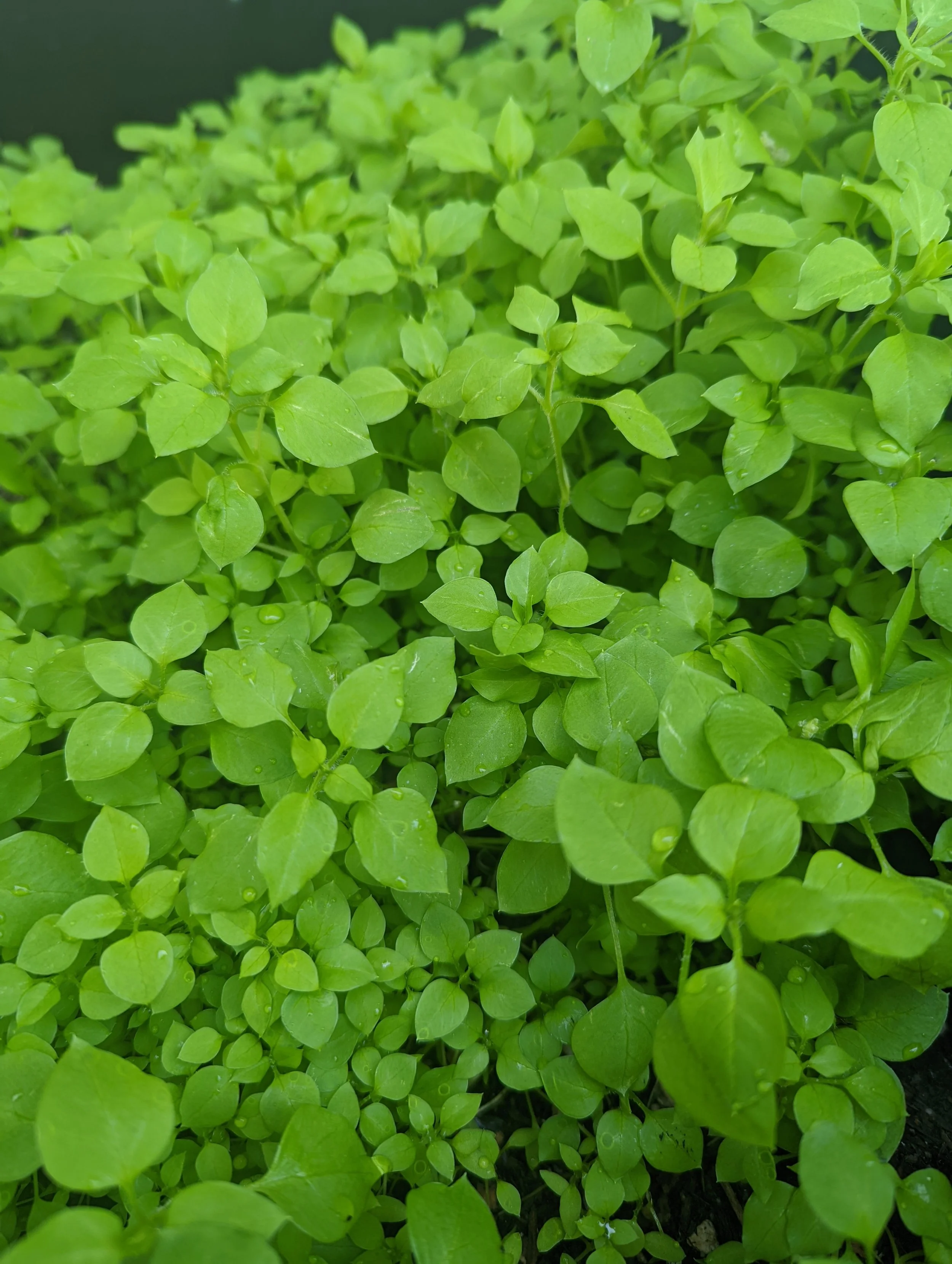The Humble Chickweed
Healing Chickweed
It’s quite possible that a mixture of plants, including kohukohu (chickweed) and kawakawa, were in that magically healing poultice that saved my grandmother’s life and to which I owe, at least in part, my very existence.
Chickweed salve was the first homemade skincare remedy I ever made. The more I learn about it, the more I think this was meant to be.
My sister had a bunch of it growing in her garden, so she chopped it down and brought me a bunch and suggested maybe I make a salve out of it.
So I roughly chopped up the fresh, delicate leaves, like watercress, and left it out in a single layer to dry out and wilt a bit overnight.
Then I steeped the chopped chickweed in olive oil, low and slow, in a double burner on the stove resulting in a jade green, chickweed infused olive oil.
Added in some beeswax and a bit of lavender oil and slowly poured the warm, emerald liquid into little golden tins and there it was, my first product — Chickweed Salve. As the kids and I started to use it, it became a common homeopathic alternative to Neosporin.
At home we use this stuff for everything from itchy bug bites to chapped lips to scrapes and burns. One time recently, I was cooking and I burned the palm of my hand on a hot cast iron. It could hear and feel my skin singe and I knew it was going to leave one of those red marks, if I was lucky and it didn’t blister. I immediately ran it under cold water, then switched over to an ice pack while I finished the meal prep, one-handed. I applied a generous slathering of the chickweed salve after icing, and I am pleased to report that the following day, the site of the burn on my palm was indistinguishable from the rest. No blistering, no red mark, no pain!
It is said that there is no place in the world where chickweed doesn’t grow. I found this affirmed when I recently spotted it on my first ever trip to Aotea (Great Barrier Island, New Zealand), my ancestral homeland, a very remote and undeveloped island in the South Pacific.
I learned that chickweed was rongoā (a medicinal plant) traditionally used by my Māori ancestors and they called it kohukohu. It could be applied as a poultice to burned or wounded skin or used internally as an expectorant and blood detoxifier among many other uses. My Māori grandmother who was born and raised on Aotea, was badly burned when she was a small child. Aotea is a remote island in the Pacific Ocean, about 54 nautical miles west of Auckland on the North Island of New Zealand. Even now the island is very undeveloped, but back in the 1930s when she was burned, there was no modern medical treatment available. There were no roads and they traveled by boat or horse. I’ve always marveled at how she survived third degree burns covering over 50% of her little body with no medical intervention.
I was told a poultice of herbs was placed on her back and that she had to lie like that on her stomach for 9 months before she could move about freely again. I knew that my mother had to change her bandages in the hospital after skin grafting surgeries, so that meant that my grandmother didn’t start those surgeries until after my mother was born and she was only 5 when the injury occurred. It’s quite possible that a mixture of plants, including kohukohu (chickweed) and kawakawa, were in that magically healing poultice that saved my grandmother’s life and to which I owe, at least in part, my very existence.
The chickweed is ready for harvesting when the tiny leaves are full and dewy and crisp, like a radish sprout, and just before the tiny white, star-shaped flowers start to pop off. It’s one of my favorite things to make for its sheer beauty and simplicity and multi-functionality. If I could only have one skincare product it would be this one. Got a bug bite? Put some chickweed salve on it. Burned your hand? Put some chickweed salve on it? Chapped lips? Chickweed salve. Want softer cuticles? Chickweed salve. Your kid scraped their knee? Chickweed salve. Just want to moisturize and replenish your skin? Good ‘ole chickweed salve. It’s nature’s Neosporin, we say, and it’s a necessary component to every home medicine cabinet.


